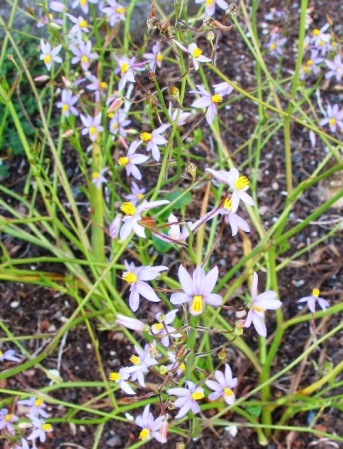
Cyanella capensis - described by Mark as appearing like a blue gypsohila in the garden
There is some debate as to whether this plant is accurately named as Cyanella capensis and whether that is in fact synonymous with Cyanella hyacinthoides, but there is no doubt that it has been a quiet star in the rockery for nigh on two months now. Many bulbs are a wonderful, quick, seasonal flash. Plants like the cyanella which just keep going week after week are considerably rarer.
The “capensis” part of the name gives a clue – South African again, from the Cape Province. It is not a big show-stopper. Like some of the species gladiolus and the ixias, the foliage starts to die off and look scruffy as the flowers open but in this case, the flowers have continued long after the foliage has withered away and disappeared. Each six petalled flower is about 15mm across, lilac blue with golden stamens and masses of them just dance on the leafless branch structure, reminiscent of a blue gypsophila.
We have had this cyanella in the rockery for many years now. I have ferreted around looking for the bulbs to spread further afield but clearly they are of the type which can find its own depth and in this case, that is deep. I have failed to find them. Apparently they are edible and somewhat oniony in flavour, also used in times past as a poultice, so they must be a reasonable size. I may have to have another dig to see. The flowers are pollinated by bees and can set viable seed.
There are different species of cyanella – about seven in fact – and we were given the yellow form, Cyanella lutea but it failed to last the distance with us.
First printed in the Waikato Times and reproduced here with their permission.
